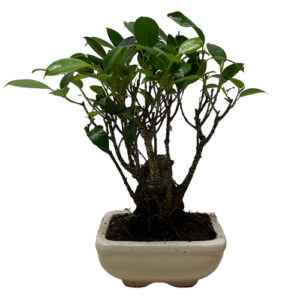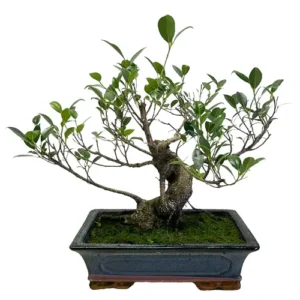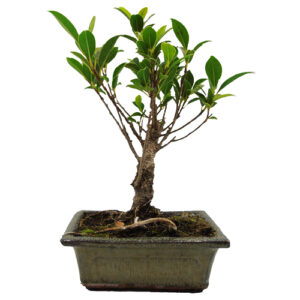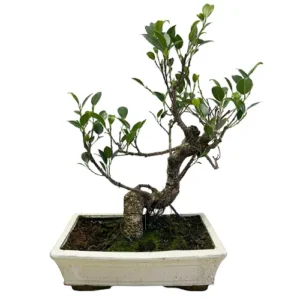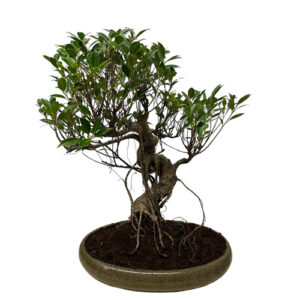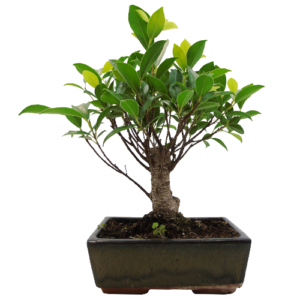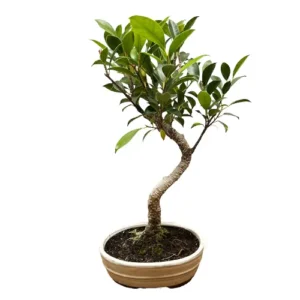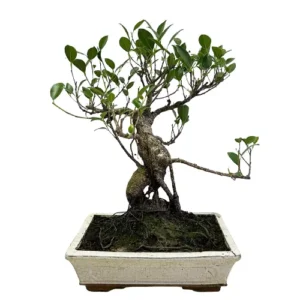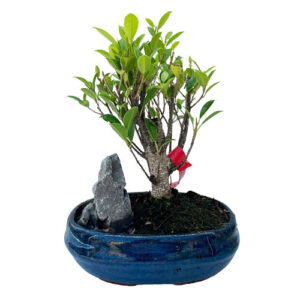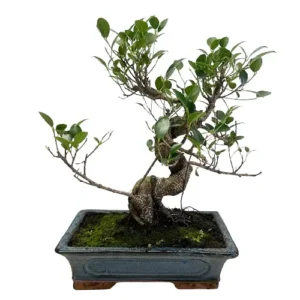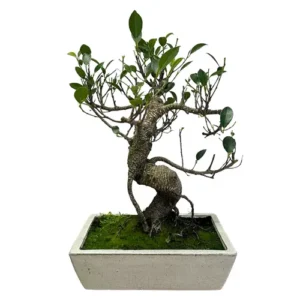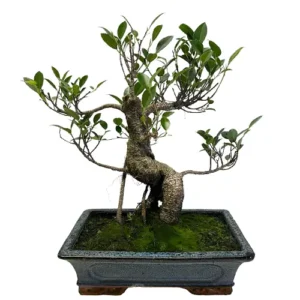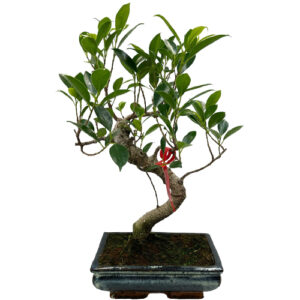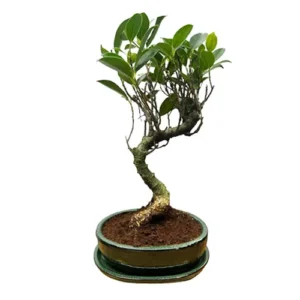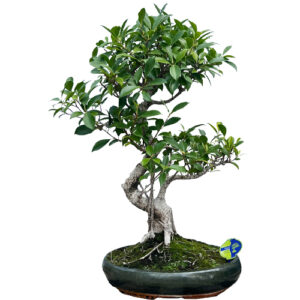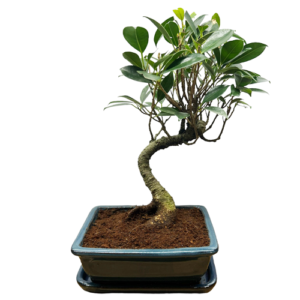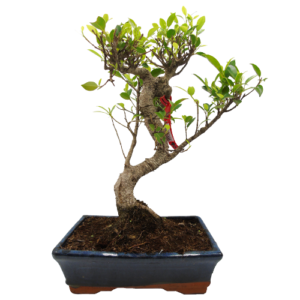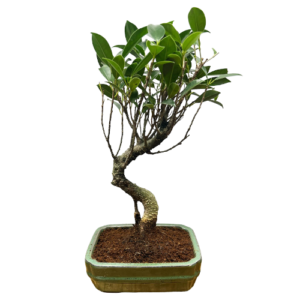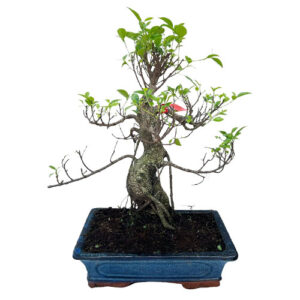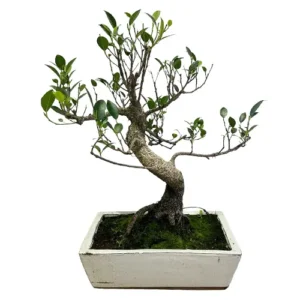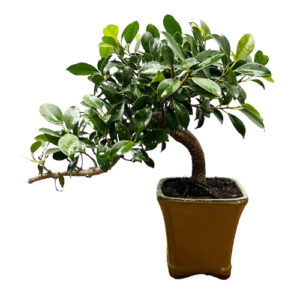Ficus Religiosa
Bo Tree Bonsai
The ficus is the most popular bonsai for beginners, and the genus can be found in most tropical climates around the world, making it the perfect indoor variety. Bo Tree bonsai are highly popular across Southeast Asia and India. It is considered a sacred tree for Buddhists and Hindus. Their signature pointed, heart-shaped leaves come through in a dazzling pink and bronze array.
Bo Tree Bonsai Care Tips
Placement
The ficus bonsai should be kept indoors as it cannot endure frosts. They require a good amount of light so choose a space that receives plenty of sunlight. Bo Tree bonsai appreciate partial shade from their placement.
The temperature of the room should be kept relatively constant and make sure you keep it away from central heating and cold draughts as this can dry out the root base. However, they will appreciate being placed outside during the summer to allow new growth, as long as temperatures do not drop below 15 °C. The ficus also benefits from higher humidity levels and will not develop aerial roots without it.
Watering
Bo Tree bonsai should be watered regularly throughout the growing season. During the winter it is important to water less than the hotter months but insure the soil is kept moist.
Feeding & Fertilizing
Bo Tree bonsai require feeding every two to three weeks across the growing season, using a general fertiliser. Come the winter, reduce feeding to once a month.
Pruning & Wiring
Bo Tree may respond well to leaf pruning from the opening of summer. Hard pruning is generally not required of ficus. Trim new shoots or pinch-out tips during the growing season. Prune back to only two or three leaves.
Bo Tree bonsai can be wired any time of the year. As soon as the branches have set remove wires. We recommend using wires with a thickness that matches the thickness of the branch: if the wire you choose is too thick you will damage the bark. If it is too thin, it won’t be effective.
Repotting
Repotting your tree is an important way to provide a fresh and suitable soil mix and ensure appropriate root health. Bo Tree bonsai requires repotting every two to three years in the spring. While spring is the ideal window, it can be repotted anytime across the year.
Trees that are ready for repotting will require root pruning, a suitable new pot and appropriate soil mix.
When repotting, do not cut back the root mass by a large amount, and choose a well-draining soil mix that has a neutral or slightly higher PH value of 5-6 but not over 7. We tend to use a mixture of different speciality bonsai soils on our trees. Every species is different so please contact us for free soil-mix advice or to take advantage of our repotting service.
Bonsai make for a one-of-a-kind indoor plant offering elegance, nature and art all in one minute form. Across an array of exquisite and erudite species, they all demand their own specific care and cultivation needs in order for their beauty to flourish. We have an extensive library of care guides for indoor bonsai trees so you can make an informed and considered choice. It’s not about selecting the perfect bonsai, it’s about selecting the perfect bonsai for you.
Bo Tree Bonsai - Typical Queries
How to propagate a Bo Tree bonsai?
Bo Tree bonsai can be propagated with cuttings, air layering and seeds. Seed require a window of 14- 90 days to take root. They also demand light and high temperatures for the soil. Cosistent misting is advised.
What are the medical properites of Bo Tree bonsai?
Bo Tree bonsai have been traditionally used by indigenous persons for their medical properties. The sap has been used to heal gum disease and remove warts. The bark has been used for antibiotic properties against e-coli and staph. Bo Tree leaves can treat dysentery and its seeds can heal urinary problems.
Do Bo Tree bonsai attract pests and diseases?
Bo Tree Bonsai are susceptible to disease and pests. These include mildew (in the powdery form) aphids and spider mites. Conduct regular inspections for these. Neem oil or insecticidal soap can ward off pests.

